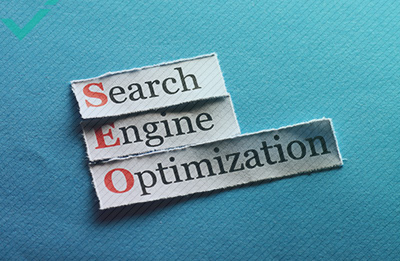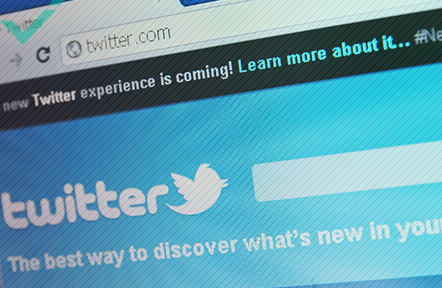“A rose by any other name would smell as sweet,” wrote Shakespeare in his 1597 play Romeo and Juliet. Shakespeare was talking about euphemisms; words that indirectly refer to something that, well, might be a little uncomfortable. There are tons of euphemisms out there; companies “downsize” instead of fire or “crowdsource” instead of receive money, and governments mostly engage in “aggression,” rather than war. In this article, we look at the age-old euphemism and examine its place in marketing. Finally, we’ll give you some first-hand tips on using euphemisms to strengthen your message.

WHAT IS A EUPHEMISM?
Euphemisms are words used to replace other words which might be too direct. In his iconic comedy routine, comedian George Carlin describes euphemisms as sterile, dry, and vague words. In his routine, he recalls how the term “shellshock” evolved into “battle fatigue”, then “operational exhaustion,” and finally, “post-traumatic stress disorder.” “The pain is completely buried under jargon” says Carlin. For many, euphemisms are an annoying way to clutter up conversations about taboo topics like sex, death, illness, disabilities, or any other subject that might be tough or uncomfortable. But for people like Carlin who are obsessed with clarity and honesty, euphemisms can be a nightmare. This is largely because of how corporations and governments have come to use them. Companies, for example, are renowned for coming up with vague terms to cover up the fact that they are firing staff. “Degrowing,” “destaffing,” and “downsizing” are just some of the first that come to mind. Governments, on the other hand, use words like “collateral damage” and “enhanced interrogation” to describe fierce acts like killing civilians or torture.
USING EUPHEMISMS EFFECTIVELY
However, euphemisms don’t always have to have such a negative impact. In fact, for many companies, euphemisms serve as an effective marketing tool for products like preservatives (condoms), feminine hygiene products (tampons/pads), or bathroom tissue (toilet paper). Sure, euphemisms can, as Carlin says, “take the life out of life” or “conceal reality.” However, sometimes that’s just what marketers need to help make their products a little more approachable. Look at the packaging on feminine hygiene products, for example. Customers aren’t likely to be attracted to a packet showing a woman curled up in bed holding her stomach due to cramps, even though, for many women, that is a reality. Instead, they’re much more likely to be attracted to the product with images of women staying active, riding bikes, doing yoga, or dressed in a fabulous white dress. While these aren’t literal euphemisms, they are euphemisms nonetheless. And, in this case, they may just help sell a product. Despite their bad rap, you can use euphemisms effectively in marketing. Here are some tips for doing so.

THE DO’S AND DON’TS OF MARKETING WITH EUPHEMISMS
DO:
- Be creative: If you have to use a euphemism, at least try to be creative and invent a new one. This will help soften the blow to your Carlin-like customers, who’ll at least have to give you points for coming up with something fresh.
- Protect and shield: Euphemisms are often used to protect and shield people from the grim reality of a situation (Carlin’s shellshocked example shows that perfectly). And in some cases, that’s not such a bad idea. If you’re marketing products designed to help people in uncomfortable situations (like laxatives, for example), use euphemisms to cut through some of the grime.
- Be uplifting: Remember the examples of tampon packages we mentioned earlier? Sometimes euphemisms can help turn a “taboo” topic into something a little more enjoyable. Just like CareFree and other similar brands use clever images and slogans to make their products more approachable, you can use euphemisms to do the same. This will help your products/brand/message seem more welcoming, regardless of how taboo or uncomfortable your industry.
- Reveal and inspire: One of the most powerful tools you have at your disposal is the mind of your audience. And sometimes, a euphemism is the best way to activate it. By indirectly referring to a topic, you encourage your audience to do the heavy lifting for you and use the power of their imagination to evoke feelings that convince them of your message.
- Be mysterious: Mystery can be a very effective marketing tool when used correctly. Once again, euphemisms that create mystery can utilize your audience’s imagination. In turn, this allows your message to resonate and ultimately, intrigue your customers to take action.
DON’T:
- Inflate or talk-up: Euphemisms used to make something seem bigger than it is are hardly ever effective. In fact, customers are actually very good at picking up on jargon designed to inflate the importance of a product, company, or service. Stray away from using euphemisms in this way.
- Be misleading: There is a fine line between intriguing someone with a bit of mystery and completely misleading them. As a marketer, you always want to avoid misleading your customers as it will produce negative repercussions. While you can market yourself uniquely, don’t promise your customers something you can’t deliver.
- Minimize or overshadow: Some things are hard to talk about in advertising, which is why euphemisms can be so handy. However, be careful that your use of euphemisms doesn’t offend any potential customers by minimizing or belittling an important issue. Sometimes euphemisms can detract so much from a word, condition, or topic so as to make it seem almost unimportant. Avoid doing so at all costs.
- Lose the thread: What gives a euphemism its power is that it is understood, regardless of how new or unique it is. While we mentioned the importance of originality when using euphemisms, make sure you’re not so original or random that no one knows what you’re talking about.
So, there you have it; a detailed look at euphemisms and how, despite their bad rap, they still have a very important role in marketing. If you liked this post, remember to share it and follow our blog for related content. For help with translation, localization, or other marketing needs, contact us today.


